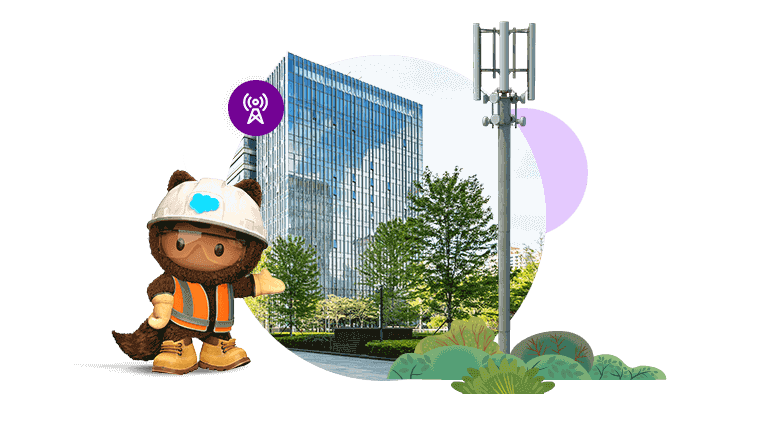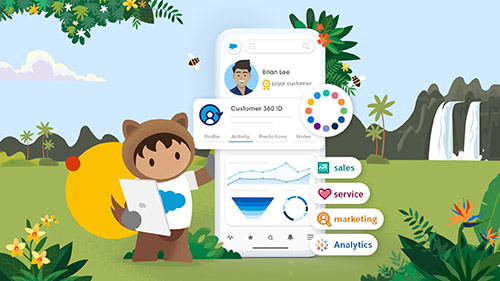When it comes to choosing a communications service provider for wireless services and home internet, customers have more options than ever before. The days of 24/7 virtual living are over. People have ceased their constant use of provider services, and artificially low levels of churn are waning as they begin to explore new options. This is compounded by inflation, which is forcing people to look more closely at the value they receive for every dollar spent. What does this mean for the telecommunications industry?
If providers want to remain competitive, they need to give customers a reason to stay.
Customers are increasingly open to testing new providers, and are willing to switch for better rates, more transparent service agreements, and better self-service options. Customers now have the option to get internet service from the tech companies that often offer simpler, contract-free services. This is contributing to rising churn rates, and is leading many providers to include third-party offerings like streaming, banking, and cybersecurity services to their bundled home services in the hopes of improving stickiness.
The pressure is on. Customers increasingly view communications providers' services as commodities. Providers realise they need the ability to create value beyond the network, and many are thinking about new ways to monetize network investments. These efforts will allow them to offer more than just a base layer of connectivity. However, this is only the beginning. How else can providers satisfy customers, unlock new revenues, and streamline operations?
To learn how these trends are impacting the industry, Salesforce conducted global research, interviewing 500 industry experts and 6,000 consumers from U.S., Europe, UK and APAC. The responses help us to better understand the changing face of the communications industry, and provide insight into how providers are taking action to maximise return on investment (ROI), enhance customer experiences, and increase opportunities for revenue growth.
Technology companies are showing signs of healthy growth in some early moves into the communications industry. This is pushing traditional providers to rethink customer experiences. Consumers view technology companies as solutions providers who help them accomplish the tasks of daily living. They enhance customers’ lives with services and hardware that they use multiple times throughout their day. Apps, services, and hardware have become part of customers' routines and forge a deep loyalty with big tech brands. When people want to listen to their favourite song, get directions to their favourite restaurant, or buy a gift for their best friend, they turn to big tech solutions to get things done. This is despite the fact that in most cases, people are using a communications service provider in order to access these services.
With more choices, the incumbent communications service providers are no longer the default. As alternatives emerge, people are ready and willing to explore choices beyond their traditional providers. Seventy-eight percent of wireless customers and 76% of cable customers said they are at least somewhat likely to switch to a tech provider. What’s more, a growing number of cable customers are cutting the cord altogether, opting to rely on streaming entertainment services (33%) and wireless internet access (20%).
When it comes to customer satisfaction, communications service providers ranked behind both technology and ecommerce, barely edging out financial services and pharmaceuticals. In a world where the
vast majority of customers (80%) will abandon a retailer after just three negative experiences, providers don’t have much room for error.
Satisfaction with providers across different industries
Showing % very or extremely satisfied
When asked about what might make them consider switching internet service providers, respondents cite price and speed at the top. Unsurprisingly, with hybrid work models growing in popularity, reliability is also a big factor. In fact, more than 1 in 10 consumers say they'd consider changing internet providers for either better reliability (13%) or improved customer service (12%).
Customers are willing to change providers for
Showing % willing to switch
How can traditional providers increase satisfaction? How do they separate themselves from the pack?
Both online and in-store experiences leave much to be desired. Over half of respondents (51%) prefer to do business online; in fact, 64% reported using their provider’s website over the last month. However, that doesn’t paint the whole picture. Forty percent of customers also visited the store over the same time period, and 35% say they prefer to do business online and in stores. This means that optimisation of physical experiences cannot be ignored.
Customers want the best of both worlds. Providers need to plan for, and support, the joining of online and offline experiences. The ability to move from one channel to another is a key customer success factor. Providers who don’t make this easy could see significant repercussions. Forty-one percent of consumers use self-service tools to make a purchase, activate services, or make account changes. Those same customers need to be able to seamlessly transition to an in-store purchase when the situation calls for it.
Customers prefer to use a combination of self-service and assisted services
Percentage of customers who use self-service vs assisted-services to make a purchase, activate services, or make account changes
However, only 22% of respondents reported that self-service options were excellent. With so much room for improvement, providers with superior digital self-service channels could gain a competitive edge.
In-store experiences also need attention. Only 25% of respondents said store associates were knowledgeable, and 23% said they received efficient service.
Customers want to feel like they matter throughout the customer lifecycle. Fifty percent of wireless customers and 47% of cable customers believe they get the best service when they threaten to switch to a different provider. This indicates that more work needs to be done at addressing customer satisfaction throughout the lifecycle — not just when people threaten to leave. Providers who are able to gain insight into their customer base and provide better service at every touchpoint could gain a significant edge in meeting customer needs and expectations. Good insights into consumer behaviour are invaluable. They enable providers to tell which customers are about to cancel, and could help
guide next best actions to decrease their likelihood of leaving.
When asked what (other than reducing the monthly bill) might increase customer satisfaction, many customers prioritise transparency (no hidden fees), discounts on streaming services, and personalised offers/deals.
Ways in which cable carriers can improve customer satisfaction
Showing options selected most frequently
Values, and transparency, matter. Customers care about the values of the companies they buy from.
Sixty-six percent of customers have stopped buying from a company whose values didn't align with theirs — up from 62% in 2020. This is particularly true for environmental practices (
78%), economic injustice (
75%), and racial injustice (
73%). Here, providers are delivering, with many employees stating that their companies think
carbon accounting (79%), closing the digital divide (84%), social responsibility (80%), and supporting underrepresented minorities (79%) are extremely or very important.













